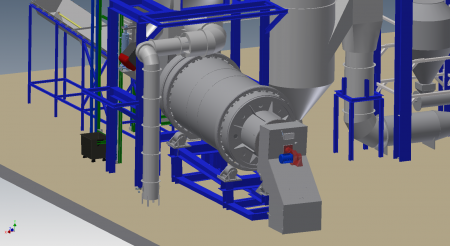Refractories for Waste Incineration Systems
Incineration is a waste treatment process that involves the combustion of organic substances contained in waste materials. Incineration and other high-temperature waste treatment systems are described as "thermal treatment". Incineration of waste materials converts the waste into ash, flue gas and heat. The ash is mostly formed by the inorganic constituents of the waste and may take the form of solid lumps or particulates carried by the flue gas. The flue gases must be cleaned of gaseous and particulate pollutants before they are dispersed into the atmosphere. In some cases, the heat generated by incineration can be used to generate electric power.
Conventional wisdom called for the use of dense high alumina brick wherever possible but for various reasons including the complexity of the furnace the cost and the need for fast efficient repairs ultra-low cement castables are now widely used. Where the furnace is big enough these products can now be installed on both new and existing linings by shotcreting as well as by casting and there is increasing use of precast shapes. In cases where high alumina brick was not viable then silicon-nitride bonded silicon carbide bricks and special shapes are often specified In waste-to-energy processes where heat recovery is important to the economics there is also a move to use products with exceptionally high thermal conductivity such as silicon-carbide castables or plastics. Where there are extremes of high temperature and/or abrasion, corrosion or erosion then very specialised materials such as a ceramic-matrix composite in precast-block form may be necessary.
We provide shaped and unshaped refractory materials for waste incineration applications including municipal waste-to-energy and industrial waste incineration.

